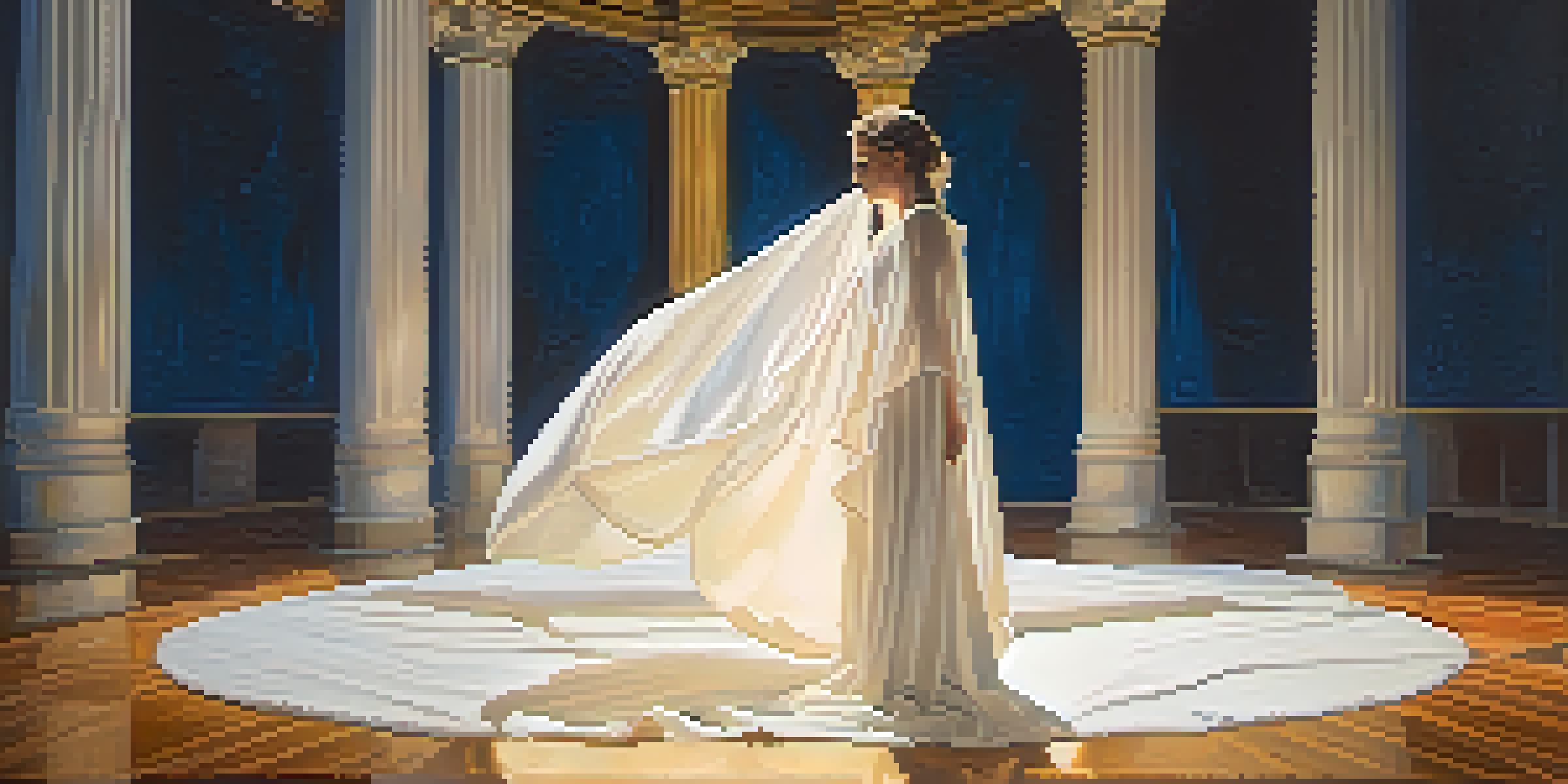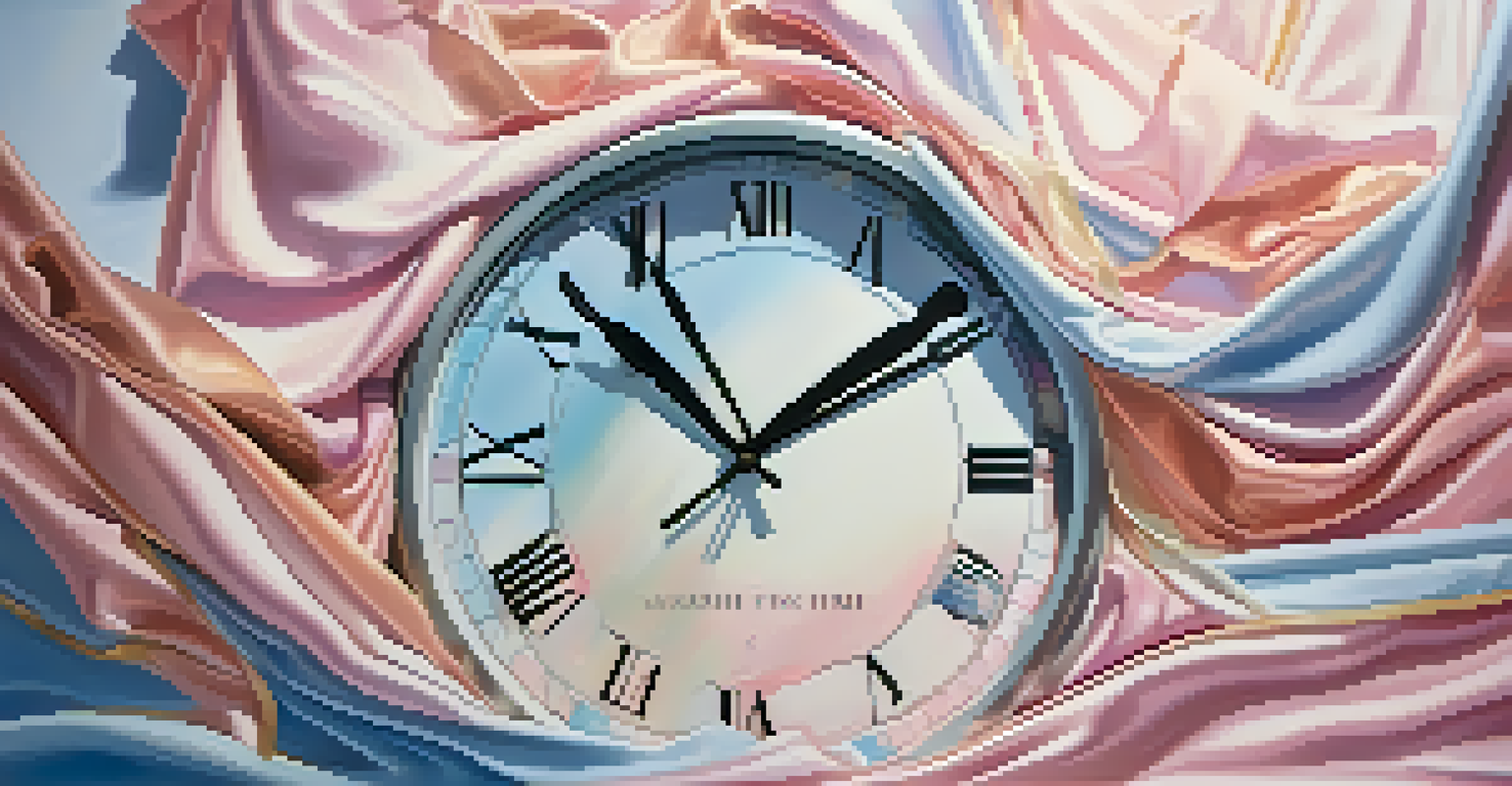Performance Art and the Concept of Time: An Exploration

Understanding Performance Art and Its Unique Nature
Performance art is a live artistic expression that combines various mediums, such as theater, dance, and visual art. Unlike traditional art forms, it emphasizes the experience of the moment, creating a dynamic interaction between the artist and the audience. This immediacy allows for a unique connection, as the work unfolds in real-time, making each performance distinct.
Art is not freedom from discipline, but disciplined freedom.
The nature of performance art often blurs the lines between performer and observer, inviting viewers to actively participate in the experience. This engagement can evoke a range of emotions, from joy to discomfort, as audiences witness the rawness of human expression. It's this interactivity that can make performance art feel more personal and impactful.
Moreover, performance art often challenges conventional narratives, pushing boundaries and encouraging new ways of thinking. By embracing spontaneity and unpredictability, artists can explore complex themes, such as identity, culture, and society, making the experience both thought-provoking and memorable.
The Concept of Time in Performance Art
Time is a crucial element in performance art, influencing how the piece is perceived and experienced. Unlike static artworks, performance art exists in a temporal space, unfolding moment by moment. This fluidity allows artists to manipulate time, whether by elongating a moment or compressing a narrative, adding layers of meaning to their work.

Artists often play with time to evoke specific emotions or reactions. For example, a prolonged silence or a sudden burst of activity can create tension or surprise, reshaping the audience's experience. The temporal aspect also invites reflection on the nature of existence and the passage of time, making viewers more aware of their own presence in the moment.
Performance Art's Unique Engagement
Performance art fosters a dynamic interaction between the artist and audience, making each experience distinct and impactful.
Additionally, the ephemeral nature of performance art means that once a piece concludes, it cannot be replicated in the same way again. This idea of impermanence can heighten the emotional stakes for both the artist and the audience, making each performance a unique event that resonates deeply, often long after it's over.
Historical Context: Time-Related Performance Art Movements
Throughout art history, various movements have highlighted the interplay between performance and time. For instance, the Futurist movement in the early 20th century celebrated speed and dynamism, reflecting the zeitgeist of an era obsessed with technological advancement. Artists like Umberto Boccioni used performance to capture the essence of movement and time in a rapidly changing world.
The only time is now.
In contrast, the Fluxus movement of the 1960s embraced spontaneity and everyday actions, often questioning the very nature of art itself. Fluxus artists, such as Yoko Ono, incorporated elements of time by inviting audiences to participate in performances that emphasized the moment, blurring the lines between art and life. This approach allowed for a more democratic understanding of art, where every individual experience was valid.
As we move into contemporary performance art, artists continue to draw from these historical influences while exploring new dimensions of time. The rise of technology has also transformed how time is perceived in performance, with live-streaming and virtual events creating new platforms for interaction and engagement across different temporalities.
Time as a Thematic Element in Performance Art
Many performance artists use time as a central theme to explore personal and societal narratives. For instance, Marina Abramović's works often delve into human endurance and the limits of the body over time. In pieces like 'The Artist Is Present,' she invites viewers to share a moment of stillness, challenging them to engage with the concept of time and presence.
Similarly, in works by artists like Tehching Hsieh, time becomes a raw material. Hsieh's year-long performances, where he lived in a cage or punched a clock every hour for a year, force audiences to confront the passage of time in a visceral way. These performances highlight the tension between routine and the extraordinary, prompting reflections on how we perceive our daily lives.
Time Shapes Experience in Art
The fluidity of time in performance art allows artists to manipulate emotions and perceptions, creating a deeper engagement with the audience.
By addressing time directly, performance art can provoke deeper philosophical inquiries about existence, memory, and the human condition. This exploration encourages viewers to think critically about their own relationships with time, ultimately leading to a more profound understanding of life’s fleeting moments.
The Role of Audience in Shaping Time in Performance Art
The audience plays a pivotal role in shaping the experience of time in performance art. Their reactions, whether through applause, silence, or even discomfort, can influence the pace and flow of the performance. In many ways, the audience becomes co-creators, participating in the live dialogue between the artist and the environment.
This interactivity can lead to unexpected moments where time seems to stretch or compress based on the audience's engagement. For example, a performance may feel prolonged if the audience is deeply invested, while a less engaged crowd may perceive it as dragging on. The energy exchanged between performer and viewer can dramatically alter the sense of time within the piece.
Furthermore, this relationship prompts artists to consider how they can manipulate audience perception of time. By incorporating pauses, changes in rhythm, or even direct audience participation, artists can create a unique temporal experience that resonates differently with each viewer, making the performance more memorable and impactful.
Technological Influences on Time in Performance Art
In our digital age, technology has significantly influenced how time is perceived and experienced in performance art. Live-streaming performances allow audiences from around the world to engage with a piece in real-time, breaking geographical barriers. This shift not only expands the audience but also alters the traditional dynamics of time and presence in art.
Additionally, technology can create new layers of interaction, such as virtual reality experiences that manipulate time perception. Artists can design immersive environments where time seems to slow down or speed up, allowing viewers to explore narratives in innovative ways. This technological integration challenges conventional notions of time, inviting audiences to rethink their experiences.
Technology Transforms Art's Time
Incorporating technology into performance art expands audience reach and alters traditional perceptions of time and presence.
As artists continue to experiment with technology, the concept of time evolves, blending the physical and digital realms. This evolution presents exciting possibilities for performance art, encouraging new forms of engagement and exploration that resonate with contemporary audiences.
Conclusion: The Lasting Impact of Time in Performance Art
In conclusion, the interplay of performance art and the concept of time creates a rich tapestry of experiences for both artists and audiences. By engaging with time—whether through themes, audience interaction, or technological advancements—performance art invites us to reflect on our own perceptions of existence. Each performance becomes a unique event, highlighting the ephemeral nature of life and art.
This exploration encourages viewers to appreciate the beauty of the present moment, fostering a deeper connection to their own experiences. As we continue to navigate an increasingly fast-paced world, the reflections offered by performance art can serve as a reminder to slow down and engage with the now.

Ultimately, the relationship between performance art and time enriches our understanding of both disciplines, offering a space for dialogue, reflection, and connection. As artists push the boundaries of time, they inspire us to consider how we live, perceive, and experience every fleeting moment.